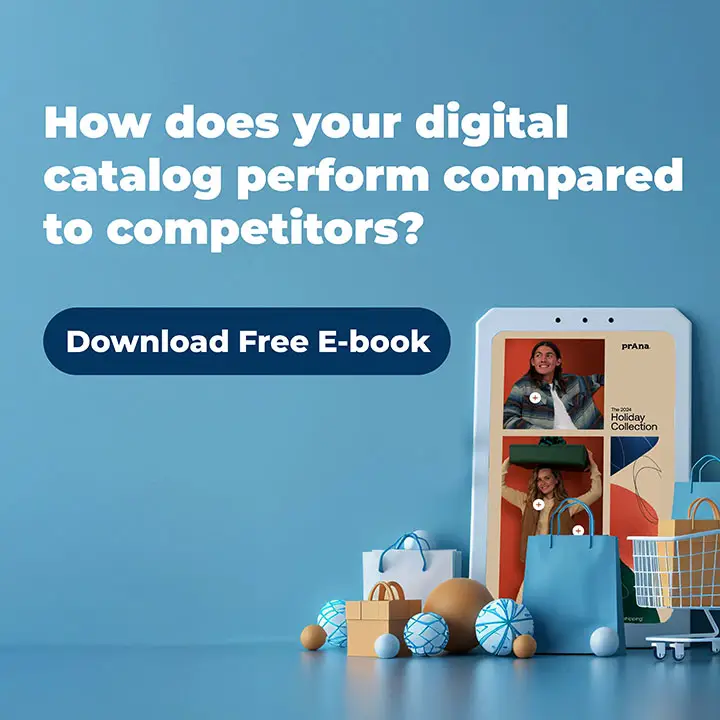Retailers are battling shrinking attention spans and an endless sea of choices, where the fight for customer attention is fiercer than ever. For marketing leaders, retail reach is not just about getting seen — it’s about influencing buying journeys, driving measurable ROI, and making every catalog work harder. Winning isn’t about producing more content; it’s about placing the right message in the right moment, backed by data and aligned to your wider retail strategy.
Digital catalogs are already a key part of the marketing mix for retailers. But are they working as hard as they could be? If you’re not actively measuring and optimizing performance across every channel, you’re likely missing out on growth opportunities and potential revenue.
Let’s break down how to maximize reach by making your digital catalogs smarter, better connected with the rest of your tools, and more effective.
Step 1: Use Data to Define the Opportunity
Leaders don’t need vanity metrics; they need insights that drive decisions. By auditing catalog performance across owned and partner channels, you uncover which touchpoints actually deliver ROI. Key metrics like engagement time, conversion lift, and traffic sources reveal where reach is strongest, and where investment is wasted. Start by auditing your catalog performance across all your channels:
Owned media:
- Website
- Email campaigns
- Social media
- In-store promotions, QR-codes
- WhatsApp newsletters or messages
Affiliate or partner media:
- Third-party publisher sites
- Influencer or brand partner campaigns
Track at least these key metrics for each publication:
- Opens and views
- Engagement time per session
- Click-through rates
- Conversions and revenue
- Popular open/view days and times
This gives you a clear picture of what’s performing and what needs work. For instance, are customers spending more time in catalogs linked from your website than from email? Are affiliates delivering higher conversions than your social media posts?
Step 2: Identify What’s Working (and What’s Not)
Once you’ve gathered the data, the next step is simple: optimize.
Look for patterns:
- Which channels drive the most engaged sessions?
- Where and when are you seeing drop-offs or low engagement peaks?
- Which campaigns led to spikes in views or sales?
Patterns in your data tell you which channels justify budget and which need rethinking. If WhatsApp consistently drives higher catalog engagement than email, shift resources. If affiliates deliver more conversions than paid social, renegotiate partnerships. Strategic optimization means reallocating effort, not just “doing more.”
Step 3: Turn Owned Channels into Growth Channels
Owned channels are often the most undervalued pillar of a content strategy, but also cost-effective. Retail leaders should ensure catalogs are integrated across the digital ecosystem:
- Prominently placed on websites and category pages
- Delivered to segmented email audiences based on purchase history
- Amplified on social media with precise targeting and retargeting. We see Whatsapp is growing as a channel in many regions.
- Embedded in-store via QR codes to bridge physical and digital
Step 4: Build Smarter Affiliate Partnerships
Your affiliate and partner networks can drive huge traffic, if you’re visible. Consider:
- Securing top banner placements on partner sites.
- Offering co-branded campaigns to push your seasonal or promotional catalogs.
- Incentivizing affiliates with higher commissions for catalog-linked conversions.
- Sharing campaign data with partners so they can optimise too.
Partner media and affiliates expand reach when approached strategically. Secure premium placements, co-brand seasonal campaigns, and align incentives with measurable catalog-linked revenue. Partnerships should be data-backed and benchmarked against other channels to justify spend.
Step 5: Create True Omnichannel Synergy
Customers don’t think in silos, and your catalog strategy shouldn’t either. Integrate catalogs into every touchpoint: from print flyers that drive traffic online, to app push notifications, to click-to-catalog ads that highlight top products. The aim: a unified, omnichannel journey where catalogs influence purchase at every stage.
Here are a few ways to create synergy:
- Use your print flyers to drive people online with QR codes.
- Mention your digital catalog in your TV or radio ads.
- Include a link in your mobile app push notifications.
- Run click-to-catalog ads that highlight top products from your catalog feed.
The goal? Turn every customer touchpoint into an opportunity to engage and convert.
Don’t Leave Retail Reach (or Revenue) on the Table
Retailers that treat digital catalogs as static product showcases are leaving revenue on the table. When catalogs are optimized, integrated across channels, and powered by data, they become engines of discovery and growth. The winners will be the retailers who transform their catalogs into measurable, omnichannel marketing assets.
Ready to see how your catalogs can unlock new audiences and drive real results? Book a strategy session with Publitas.


